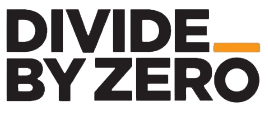The automotive industry is undergoing a significant transformation driven by the integration of advanced manufacturing technologies. One of the most impactful of these technologies is 3D printing, which allows for the production of complex geometries that are difficult or impossible to achieve with traditional methods. This capability is leading to significant improvements in performance and functionality for automotive components. Additionally, topology optimization in 3D printing is revolutionizing the production of patterns for investment casting and sand casting, further enhancing manufacturing efficiency and part performance.
The Power of Complex Geometries
Enhanced Performance
3D printing enables the creation of intricate geometries that optimize the performance of automotive components. For instance, integrating cooling channels directly into parts can significantly enhance heat dissipation, thereby improving engine efficiency and reducing the risk of overheating. This is particularly beneficial for components exposed to high thermal loads, such as brake calipers and engine parts.
Lightweight Structures
The ability to produce lightweight lattice structures is another significant advantage of 3D printing. These structures reduce the weight of components without compromising their strength and durability. Lighter components contribute to better fuel efficiency and improved vehicle handling, which are critical factors in automotive performance.
Improved Functionality
3D printing allows for the integration of multiple functions into a single component, reducing the need for assemblies and minimizing potential points of failure. For example, a single 3D-printed part can incorporate complex internal pathways for fluid or air flow, enhancing the overall functionality of the component.
Topology Optimization with 3D Printing
What is Topology Optimization?
Topology optimization is a computational design technique that optimizes the material layout within a given design space, subject to specific performance criteria and constraints. This process results in organic, highly efficient structures that use the least amount of material while maintaining the necessary strength and functionality.
Applications in Investment Casting and Sand Casting
3D printing is transforming traditional casting methods by enabling the creation of optimized patterns for investment casting and sand casting. These patterns can be produced with complex geometries that improve the performance of the final cast components.
Investment Casting
In investment casting, 3D-printed wax or plastic patterns are used to create detailed ceramic molds. These molds can then be used to cast metal parts with intricate features and optimized designs. For instance, APWorks, a subsidiary of Airbus, has utilized 3D printing to produce aluminum components with complex internal cooling channels, enhancing heat management and overall performance.
Sand Casting
For sand casting, 3D-printed patterns allow for the creation of sand molds with intricate internal structures. This capability enables the production of components with optimized geometries, reducing weight and improving strength. An example is Volkswagen’s use of 3D printing to produce complex tooling and assembly aids, which has significantly improved their manufacturing efficiency and part performance.
Case Studies from Divide By Zero Technologies
Lightweight Suspension Components
Divide By Zero Technologies has leveraged 3D printing to produce lightweight suspension components for automotive manufacturers. Using topology optimization, these components feature complex internal lattice structures that reduce weight while maintaining strength and durability. This leads to improved vehicle handling and fuel efficiency.
Optimized Brake Calipers
Divide By Zero has developed brake calipers with internal cooling channels optimized through 3D printing. These channels enhance heat dissipation, improving braking performance and reducing thermal fatigue. The optimized design ensures reliable performance under extreme conditions.
Custom Engine Components
Engine components benefit greatly from the design freedom offered by 3D printing. Divide By Zero has produced custom engine parts with optimized geometries that enhance airflow and reduce weight. These parts, created using advanced materials and 3D printing techniques, contribute to improved engine efficiency and performance.
The Future of Complex Geometries in Automotive Manufacturing
Continuous Innovation
As 3D printing technology advances, the possibilities for creating complex geometries will continue to expand. New materials and printing techniques will enable the production of even more intricate and high-performance components.
Integration with AI and Machine Learning
The integration of artificial intelligence (AI) and machine learning with topology optimization and 3D printing will revolutionize the design process. These technologies can analyze vast amounts of data to create optimal designs that go beyond human capabilities, further enhancing the performance and functionality of automotive components.
Sustainable Manufacturing
3D printing contributes to sustainable manufacturing by reducing material waste and enabling the production of lightweight components that improve fuel efficiency. The ability to create optimized designs with minimal material usage aligns with the automotive industry’s move towards greener practices.
Conclusion
3D printing has unlocked new possibilities for producing complex geometries that enhance the performance and functionality of automotive components. Through topology optimization and advanced printing techniques, components can be designed to be lighter, stronger, and more efficient. Divide By Zero Technologies is at the forefront of this transformation, providing innovative 3D printing solutions that empower automotive manufacturers to push the boundaries of design and performance. As technology continues to evolve, the impact of 3D printing on the automotive industry will only grow, driving future innovations and improvements.

